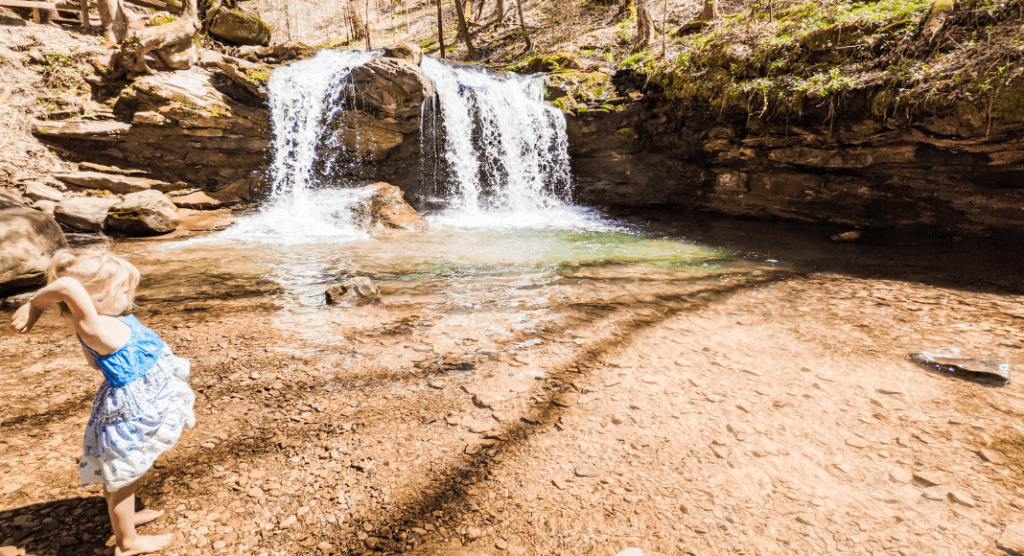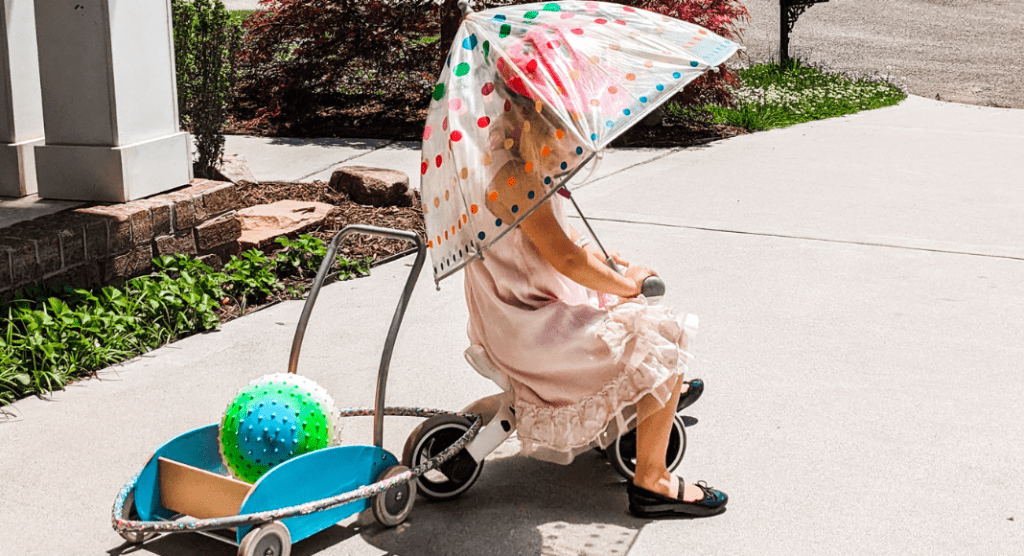 It’s hard to believe, but this is my family’s fourth year taking on the 1000 Hours Outside Challenge! In mid-2019, as I was pregnant with my third kid, I stumbled upon this grassroots challenge and have watched it grow exponentially as we’ve grown exponentially with it.
It’s hard to believe, but this is my family’s fourth year taking on the 1000 Hours Outside Challenge! In mid-2019, as I was pregnant with my third kid, I stumbled upon this grassroots challenge and have watched it grow exponentially as we’ve grown exponentially with it.
So, what is the 1000 Hours Outside Challenge?
It’s a simple yet profound notion to spend 1000 hours outside over the course of a year. And that’s it. Some people may get hung up on the finer details of which hours truly count, but it really is as simple as spending more time outside in a culture that is pulling families inside more and more. The founder, Ginny Yurich, chose 1000 hours because this amount of time lines up with the average amount of time kids spend on screens in a year. As I mentioned, the movement has grown to encompass hundreds of thousands of followers and a wealth of resources that can be found over on Instagram @1000hoursoutside.
This challenge has had a positive influence on our family and the shaping of my kids’ childhood, and I wanted to share a little bit about what we’ve learned and experienced along the way. I’ll start with 2020 because I took an anomaly road trip in 2019 to all 50 states with my three under three, and the 1000 hours just came naturally as part of the adventure. But back home in 2020 was when I really had the challenge and joy of seeing how the 1000 Hours Outside Challenge fit into our everyday lives.
We officially started the challenge in 2020. Knoxville doesn’t have a harsh winter, but I’m not a huge fan of the cold, so starting in January was rough. If you’re a numbers person like me, you may have already done the math about how to accomplish 1000 hours outside in a year; it’s about 2 ¾ hours a day. And in January, that felt a little impossible. We were excited to get one to possibly two hours a day outside. If this is you when you start the challenge, don’t get discouraged. Once it warmed up, we caught up easily and the warmth stays well into November here. There’s an old Scandinavian adage that says there’s no such thing as bad weather, just bad clothing. I’m not here to tell you that or to suck it up and go out all day when it’s freezing. Remember: you get to decide how the challenge works for your family and this challenge is about way more than experiencing the elements or meeting a certain hour count. As Ginny says, “Even if you lose, you win!”
In fact, my main takeaways from participating in the 1000 Hours Outside Challenge really aren’t specific to outside time at all.
One of the biggest things we learned the first year was that it takes time to build new habits. I think this is the biggest hang-up for families starting the challenge. All the benefits sound great on paper, but when you’re a week in and your kids are crying that they are bored, it’s a little hard to see the light at the end of the tunnel. This is where it’s important to preserve.
New habits don’t form overnight. Start small and build to more time outside and build in new habits. We do a lot of stuff outside together, but I also found it helpful to give my kids small spurts of time alone in the backyard while I ran an errand inside and slowly grew that time while observing them from inside. My biggest piece of advice is to not structure your time outside or cure the boredom. That truly is the beauty of switching to outdoor play — it’s the perfect catalyst for unstructured play. And by unstructured play I mean letting your kids figure out how to entertain themselves outside. Dive in head-first to the opportunity to form new habits and new expectations that outside free play is king.
 This new habit came in handy for me in the spring of 2020 when the world shut down and I started working from home full-time. This is when we learned the second biggest takeaway from the challenge: our outside adventures didn’t have to be extravagant adventures (like our 2019 escapades had been). Working from home, I was now involved in the challenge in a more everyday way. Before then, my mom had been taking the kids outside while she watched them when I was at work, and I was planning outings for the weekend to make up for lost time. Now stuck at home, I started to build the habit of just hanging out in the driveway working from a makeshift desk while the girls free-played outside around me. I really appreciate their ability to play and entertain themselves while I am working.
This new habit came in handy for me in the spring of 2020 when the world shut down and I started working from home full-time. This is when we learned the second biggest takeaway from the challenge: our outside adventures didn’t have to be extravagant adventures (like our 2019 escapades had been). Working from home, I was now involved in the challenge in a more everyday way. Before then, my mom had been taking the kids outside while she watched them when I was at work, and I was planning outings for the weekend to make up for lost time. Now stuck at home, I started to build the habit of just hanging out in the driveway working from a makeshift desk while the girls free-played outside around me. I really appreciate their ability to play and entertain themselves while I am working.
To this day, this habit has become the bulk of our outside time. And while it isn’t quite the Instagram-worthy content people crave, it’s really the beauty of life in the everyday moments. We still go camping and hiking and spend a week at the beach, but true sustainable habits are formed in the everyday, especially for traditional working families. It also goes to show that you don’t need a lot of nature to benefit from it. A worm in a puddle at the end of the driveway after a rain. A one foot by one foot patch of mud. A single tree in the front yard. Sunshine and clouds overhead. These are the spaces where my girls make most of their nature discoveries.
 And really that’s what these past two and half years have been. Once we figured out the beauty of unstructured play outside in everyday moments, it started to spill into the rest of our life. We still participate in the challenge to this day and have racked up about 1,100 hours outside every year. But it’s also spilled back inside with free play being the reigning activity every day, whether inside or out. I am so happy I discovered this challenge when the girls were young; it helped me form that vision for their childhood, reminiscent of my own slow childhood with plenty of free time for imaginative play, diving into stories, and exploration of the big, beautiful world.
And really that’s what these past two and half years have been. Once we figured out the beauty of unstructured play outside in everyday moments, it started to spill into the rest of our life. We still participate in the challenge to this day and have racked up about 1,100 hours outside every year. But it’s also spilled back inside with free play being the reigning activity every day, whether inside or out. I am so happy I discovered this challenge when the girls were young; it helped me form that vision for their childhood, reminiscent of my own slow childhood with plenty of free time for imaginative play, diving into stories, and exploration of the big, beautiful world.
As the girls have gotten older, I’ve felt the pressure to fill their days with structured “learning opportunities.” But our participation in the challenge centers me around the fact that I have a vision for my kids’ childhood. It also gives me the structure that I crave to embrace an unstructured lifestyle.
What are we up to?
 “Nothing” sounds a little too free-range for grocery store banter, but the 1000 Hours Outside Challenge sounds purposeful. The 1000 Hours Outside Challenge has given us the foundation to see the benefits of this lifestyle and it has given me the confidence to continue to embrace it as my kids get older. I’ve seen first-hand how letting them to their own devices in outdoor free play has made their imaginations blossom. I see their wonder and excitement over the small things. Their independence. Their problem solving. Their inventiveness. Their risk taking. The list goes on.
“Nothing” sounds a little too free-range for grocery store banter, but the 1000 Hours Outside Challenge sounds purposeful. The 1000 Hours Outside Challenge has given us the foundation to see the benefits of this lifestyle and it has given me the confidence to continue to embrace it as my kids get older. I’ve seen first-hand how letting them to their own devices in outdoor free play has made their imaginations blossom. I see their wonder and excitement over the small things. Their independence. Their problem solving. Their inventiveness. Their risk taking. The list goes on.



















